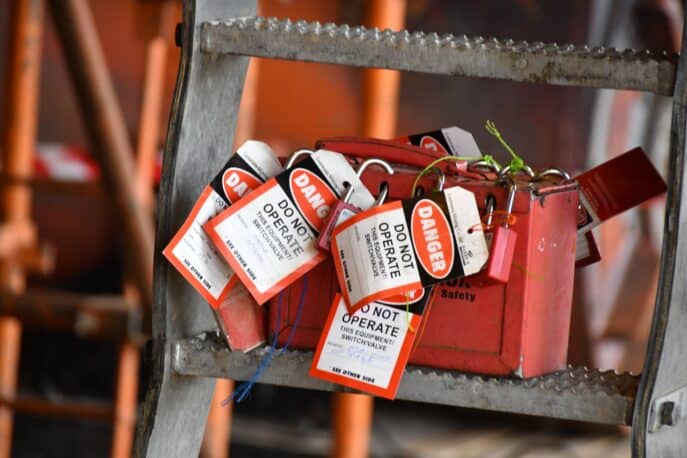Successful Lockout Tagout Isolating Machinery: A Guide for Safety Professionals
Lockout tagout isolating machinery is a critical safety process for preventing workplace injuries when servicing or maintaining equipment. For safety professionals, mastering successful lockout tagout isolating machinery procedures ensures compliance with Australian legislation and protects workers from unexpected energisation or startup.
This article will explore the essential steps, legal requirements, and best practices for effective lockout tagout isolating machinery.
Understanding Lockout Tagout Isolating Machinery
Lockout tagout isolating machinery refers to the controlled process of shutting down, isolating, and securing machinery energy sources before maintenance or repair work. Successful lockout tagout isolating machinery reduces the risk of injury caused by accidental machine start-up or the release of hazardous energy.
In Australia, Safe Work Australia’s Model Work Health and Safety (WHS) Regulations provide the legislative framework requiring businesses to implement safe isolation procedures. Safety professionals must ensure their lockout tagout isolating machinery protocols align with these regulations to prevent workplace incidents.
Importance of Successful Lockout Tagout Isolating Machinery
The importance of successful lockout tagout isolating machinery cannot be overstated for safety professionals. According to Safe Work Australia, thousands of injuries occur annually due to failure in effective isolation of machinery. These injuries range from minor cuts to fatal electrocution or crushing incidents.
By embedding successful lockout tagout isolating machinery practices in workplace safety culture, organisations can dramatically reduce workplace hazards, protect workers, and meet Australian legislative obligations. Safety professionals play a vital role in training employees and ensuring compliance with these essential safety measures.
Australian Legislation and Standards on Lockout Tagout Isolating Machinery
Compliance with Australian legislation is fundamental to successful lockout tagout isolating machinery. The Work Health and Safety Act 2011 (Cth) and corresponding WHS Regulations require duty holders to manage risks associated with machinery, including energy isolation.
Safe Work Australia’s Code of Practice for Managing Risks of Plant in the Workplace offers detailed guidance on isolation procedures. It highlights the need for documented lockout tagout isolating machinery processes and employee training to comply with legal duties.
Safety professionals should also refer to AS/NZS 4024 (Safety of Machinery series) for specific technical standards related to isolating machinery safely.
Step-by-Step Lockout Tagout Isolating Machinery Process
To achieve successful lockout tagout isolating machinery, safety professionals must implement a clear step-by-step process. This ensures workers know how to safely isolate energy sources and avoid risks.
-
Prepare for Shutdown: Identify all energy sources connected to the machinery.
-
Notify Affected Workers: Inform all personnel about the planned lockout tagout isolating machinery activity.
-
Shutdown Equipment: Power down the machinery following manufacturer’s instructions.
-
Isolate Energy Sources: Disconnect electrical, mechanical, hydraulic, pneumatic, or stored energy sources.
-
Apply Lockout Devices and Tags: Secure isolation points with locks and warning tags to prevent accidental re-energisation.
-
Verify Isolation: Test to ensure the machinery cannot start or move.
-
Perform Maintenance: Conduct the required servicing or repairs.
-
Remove Lockout Devices: Only authorised persons remove locks and tags after confirming work completion.
-
Restore Equipment: Restart machinery safely and notify affected workers.
Following these steps ensures a successful lockout tagout isolating the machinery process and helps prevent accidents.
Control Measures for Successful Lockout Tagout Isolating Machinery
Effective control measures underpin successful lockout tagout isolating machinery programs. Safety professionals should focus on:
-
Training and Competency: Workers must be trained on lockout tagout isolating machinery techniques, risks, and legislation.
-
Clear Procedures: Documented and accessible isolation procedures tailored to each machine.
-
Equipment Labelling: Proper labelling of energy sources and isolation points.
-
Audits and Inspections: Regular reviews to verify compliance and identify improvement areas.
-
Incident Reporting: Immediate reporting and investigation of any lockout tagout failures or near misses.
Implementing these control measures builds a safer environment and supports compliance with Australian workplace safety laws.
Common Challenges and Solutions in Lockout Tagout Isolating Machinery
Safety professionals often face challenges implementing successful lockout tagout isolating machinery processes. These include a lack of employee awareness, inadequate procedures, and complex machinery with multiple energy sources.
Solutions involve robust training programs, engaging leadership commitment, involving workers in safety planning, and leveraging technology like electronic lockout systems. Continuous improvement and consultation with workers help overcome barriers and enhance isolation safety.
See our courses Lock Out Tag Out, Personal Locks and Safety/Information Tags and Machine Isolation.
Conclusion: Ensuring Safety with Successful Lockout Tagout Isolating Machinery
Successful lockout tagout isolating machinery is an indispensable safety practice for protecting workers and complying with Australian legislation. Safety professionals must prioritise comprehensive training, clear procedures, and ongoing compliance monitoring to maintain a safe workplace.
By adopting proven lockout tagout isolating machinery processes, organisations reduce risks of injury, ensure legislative compliance, and foster a safety-first culture. Remember, a safe workplace begins with effective isolation — start implementing or reviewing your lockout tagout isolating machinery practices today.

